Ballet as a music form progressed from simply a complement to dance, to a concrete compositional form that often had as much value as the dance that went along with it. The dance form, originating in France during the 17th century, began as a theatrical dance. It was not until the 19th century that ballet gained status as a "classical" form. In ballet, the terms 'classical' and 'romantic' are chronologically reversed from musical usage. Thus, the 19th century Classical period in ballet coincided with the 19th century Romantic era in music. Ballet music composers from the 17th–20th centuries, including the likes of Jean-Baptiste Lully, Pyotr Ilyich Tchaikovsky, Igor Stravinsky, and Sergei Prokofiev, were predominantly in France and Russia. Yet with the increased international notoriety seen in Tchaikovsky's and Stravinsky's lifetime, ballet music composition and ballet in general spread across the western world.
Some films feature recognizable dance forms, demonstrating them, shedding light on their origin, or being the base of a plot.

Jerome Robbins was an American dancer, choreographer, film director, theatre director and producer who worked in classical ballet, on stage, film, and television.
Shall We Dance may refer to:

Shall We Dance? is a 2004 American romantic comedy-drama film directed by Peter Chelsom and starring Richard Gere, Jennifer Lopez, and Susan Sarandon. It is a remake of the 1996 Japanese film of the same name.
Tamiyo Kusakari is a Japanese actress and former ballet dancer. In 1997 her portrayal of Mai Kishikawa in Shall We Dance? won a Japan Academy Prize for Outstanding Performance by an Actress in a Leading Role.

Daddy Long Legs (1955) is a musical comedy film set in France, New York City, and the fictional college town of Walston, Massachusetts. The film was directed by Jean Negulesco, and stars Fred Astaire, Leslie Caron, Terry Moore, Fred Clark, and Thelma Ritter, with music and lyrics by Johnny Mercer. The screenplay was written by Phoebe Ephron and Henry Ephron, loosely based on the 1912 novel Daddy-Long-Legs by Jean Webster.
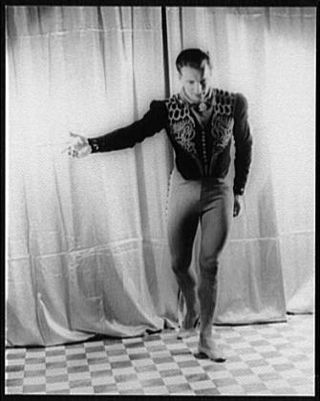
Antony Tudor was an English ballet choreographer, teacher and dancer. He founded the London Ballet, and later the Philadelphia Ballet Guild in Philadelphia, Pennsylvania, U.S., in the mid-1950s.

Shall We Dance is a 1937 American musical comedy film directed by Mark Sandrich. It is the seventh of the ten Fred Astaire-Ginger Rogers films. The story follows an American ballet dancer (Astaire) who falls in love with a tap dancer (Rogers); the tabloid press concocts a story of their marriage, after which life imitates art. George Gershwin wrote the symphonic underscore and Ira Gershwin the lyrics, for their second Hollywood musical.
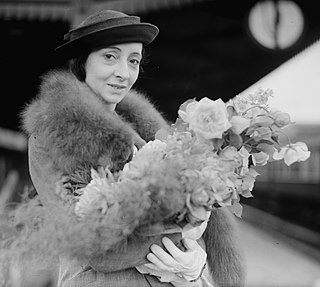
Olga Alexandrovna Spessivtseva was a Russian ballerina whose stage career spanned from 1913 to 1939.

In dance, the galop, named after the fastest running gait of a horse, a shortened version of the original term galoppade, is a lively country dance, introduced in the late 1820s to Parisian society by the Duchesse de Berry and popular in Vienna, Berlin and London. In the same closed position familiar in the waltz, the step combined a glissade with a chassé on alternate feet, ordinarily in a fast 2
4 time.
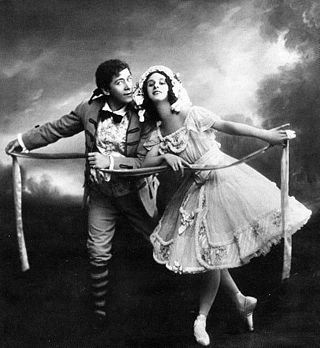
Nikolai Gustavovich Legat was a ballet dancer, choreographer and teacher.

Harriet Hoctor was a ballerina and actress. Composer George Gershwin composed a symphonic orchestral piece specifically for Hoctor in the film Shall We Dance (1937).
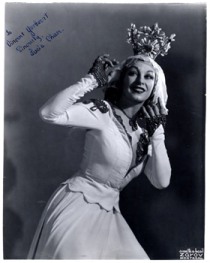
Lucia Hosmer Chase was an American dancer, actress, ballet director and also the co-founder of the American Ballet Theatre.
Walking the Dog is one of many musical numbers written in 1937 by George Gershwin for the Fred Astaire – Ginger Rogers film score for Shall We Dance. In the film, the music accompanies a sequence of walking a dog on board a luxury liner. In 1960, the sequence was published as "Promenade".
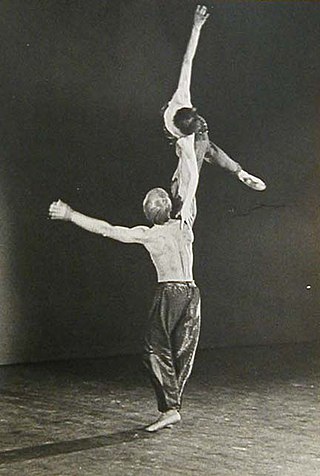
Galina Samsova was a Russian ballet dancer and company director.
Sarah Wildor is an English ballet dancer. She is most noted as a former principal dancer with The Royal Ballet, a leading international ballet company based at the Royal Opera House in Covent Garden, London.
Hoctor's Ballet is a composition by George Gershwin for full orchestra written in 1937, originally from the score for Shall We Dance. Performance time runs about 10 minutes.










